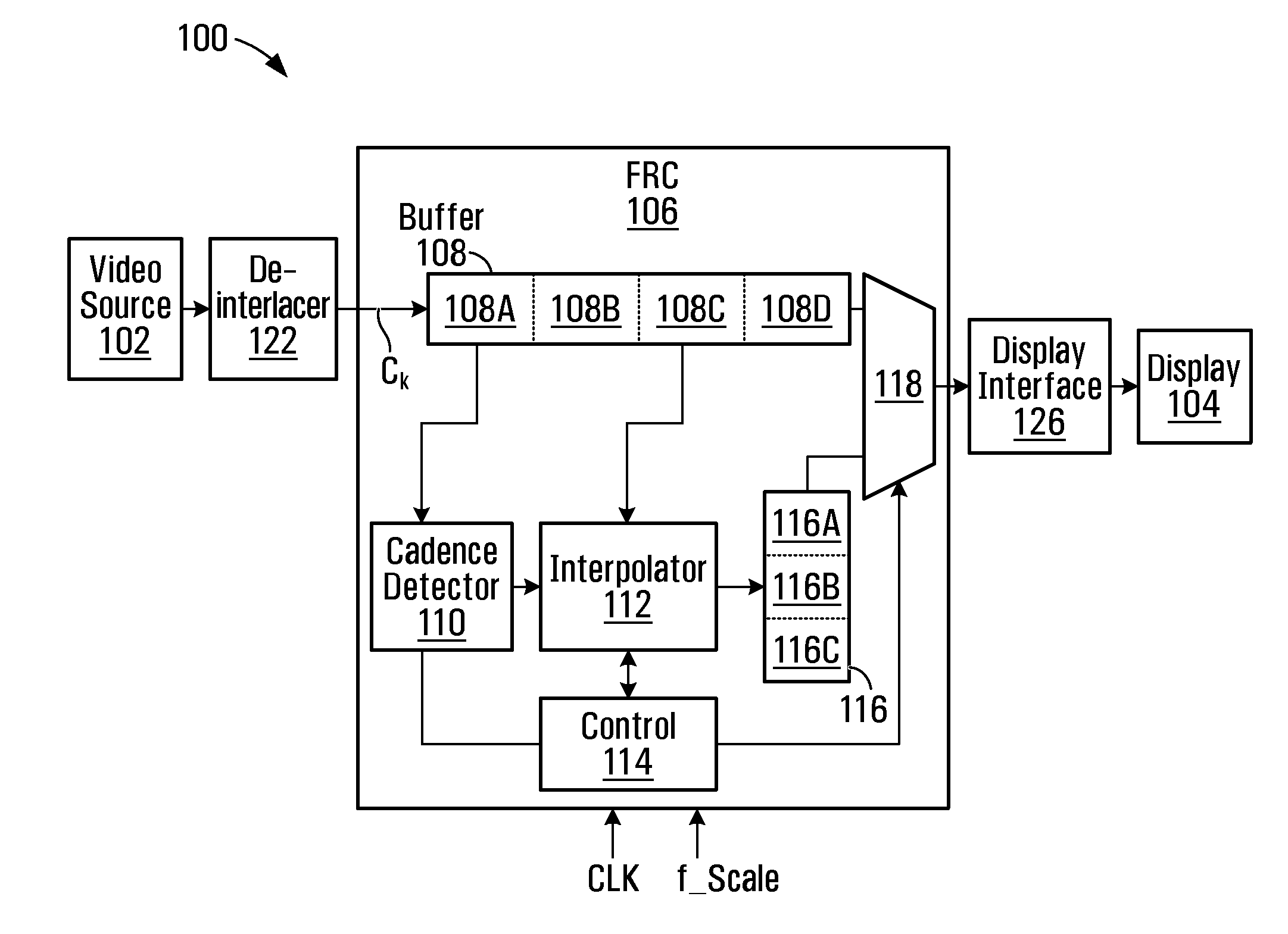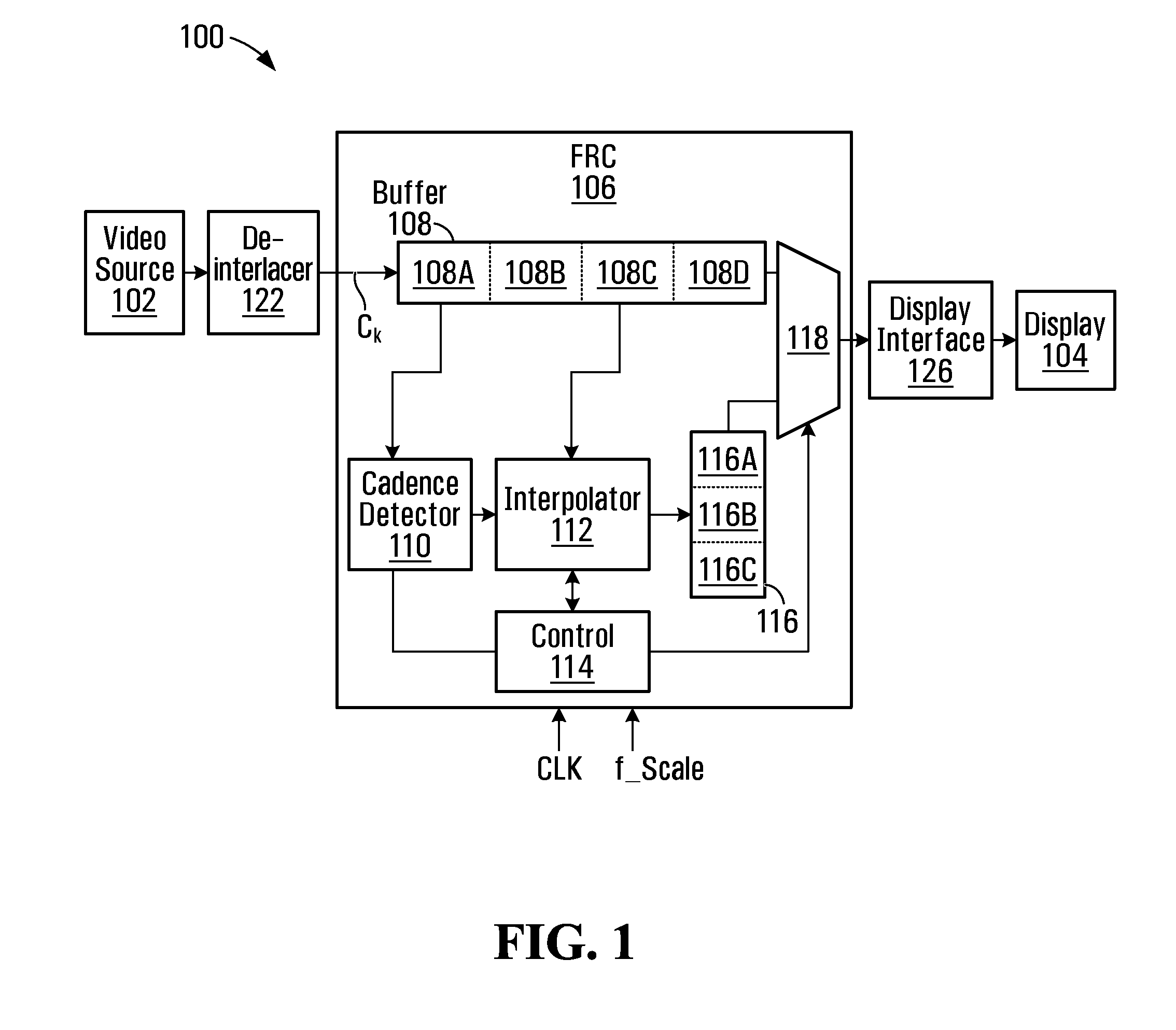Frame rate converter for input frames with video and film content
- Summary
- Abstract
- Description
- Claims
- Application Information
AI Technical Summary
Benefits of technology
Problems solved by technology
Method used
Image
Examples
Embodiment Construction
[0029]FIG. 1 illustrates a video device 100 including a video source 102, a display 104 and a frame rate converter (FRC) 106, exemplary of an embodiment of the present invention. Video source 102 receives a video input signal, and provides a decoded sequence of video frames to FRC 106.
[0030]Video source 102 may receive a video signal in the form of a compressed stream of digital video such as MPEG 2, MPEG 4, H264 or the like and provide a decompressed video frame or field sequence. Video source 102 may include a decoder for forming fields or frames of decoded video. Video source 102 may similarly output a decoded audio stream for further processing. Video source 102 may also receive video signals in other formats such as a DVI, HDMI, or DisplayPort cable, or via an analog video interface such as VGA.
[0031]Video device 100 may take the form of a set top box, satellite receiver, terrestrial broadcast receiver, media player (e.g. DVD player or Blu-ray player), media receiver, a persona...
PUM
 Login to View More
Login to View More Abstract
Description
Claims
Application Information
 Login to View More
Login to View More - R&D
- Intellectual Property
- Life Sciences
- Materials
- Tech Scout
- Unparalleled Data Quality
- Higher Quality Content
- 60% Fewer Hallucinations
Browse by: Latest US Patents, China's latest patents, Technical Efficacy Thesaurus, Application Domain, Technology Topic, Popular Technical Reports.
© 2025 PatSnap. All rights reserved.Legal|Privacy policy|Modern Slavery Act Transparency Statement|Sitemap|About US| Contact US: help@patsnap.com



